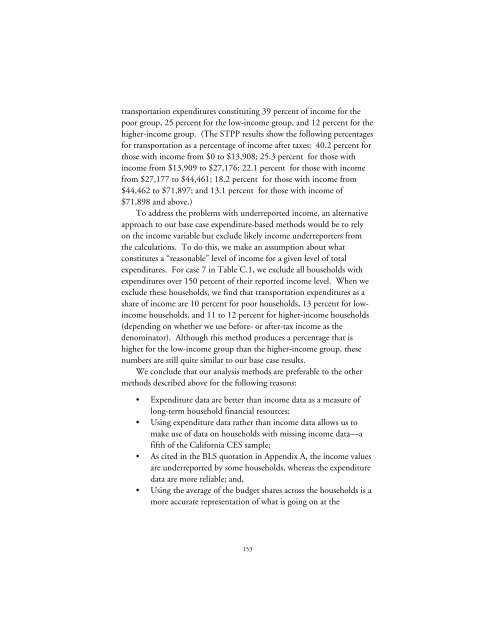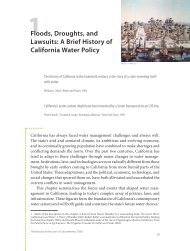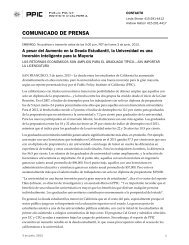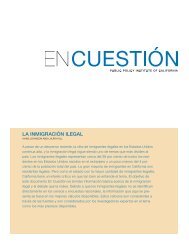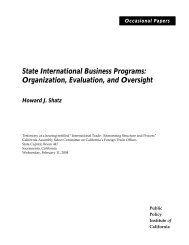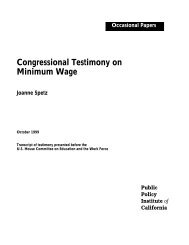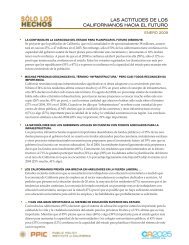Transportation Spending by Low-Income California Households ...
Transportation Spending by Low-Income California Households ...
Transportation Spending by Low-Income California Households ...
Create successful ePaper yourself
Turn your PDF publications into a flip-book with our unique Google optimized e-Paper software.
transportation expenditures constituting 39 percent of income for the<br />
poor group, 25 percent for the low-income group, and 12 percent for the<br />
higher-income group. (The STPP results show the following percentages<br />
for transportation as a percentage of income after taxes: 40.2 percent for<br />
those with income from $0 to $13,908; 25.3 percent for those with<br />
income from $13,909 to $27,176; 22.1 percent for those with income<br />
from $27,177 to $44,461; 18.2 percent for those with income from<br />
$44,462 to $71,897; and 13.1 percent for those with income of<br />
$71,898 and above.)<br />
To address the problems with underreported income, an alternative<br />
approach to our base case expenditure-based methods would be to rely<br />
on the income variable but exclude likely income underreporters from<br />
the calculations. To do this, we make an assumption about what<br />
constitutes a “reasonable” level of income for a given level of total<br />
expenditures. For case 7 in Table C.1, we exclude all households with<br />
expenditures over 150 percent of their reported income level. When we<br />
exclude these households, we find that transportation expenditures as a<br />
share of income are 10 percent for poor households, 13 percent for lowincome<br />
households, and 11 to 12 percent for higher-income households<br />
(depending on whether we use before- or after-tax income as the<br />
denominator). Although this method produces a percentage that is<br />
higher for the low-income group than the higher-income group, these<br />
numbers are still quite similar to our base case results.<br />
We conclude that our analysis methods are preferable to the other<br />
methods described above for the following reasons:<br />
• Expenditure data are better than income data as a measure of<br />
long-term household financial resources;<br />
• Using expenditure data rather than income data allows us to<br />
make use of data on households with missing income data—a<br />
fifth of the <strong>California</strong> CES sample;<br />
• As cited in the BLS quotation in Appendix A, the income values<br />
are underreported <strong>by</strong> some households, whereas the expenditure<br />
data are more reliable; and,<br />
• Using the average of the budget shares across the households is a<br />
more accurate representation of what is going on at the<br />
153


